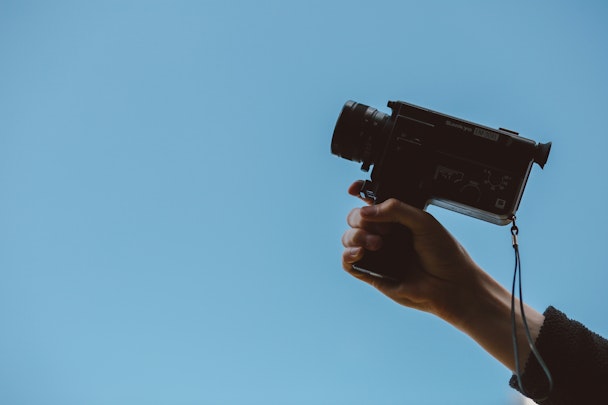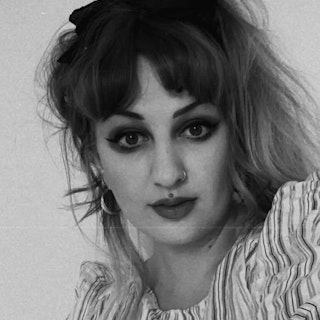Creatives divulge the secrets behind remotely filmed ads
Thanks to the pandemic, the concept of remote filming has taken off. Instead of grappling with travel schedules, brands have been able to get talent from all over the world on projects… albeit without working together physically. As part of The Drum’s Globalization Deep Dive, we go behind the scenes of ads that have been produced virtually by multi-national teams.

The pandemic created challenges and opportunities for creatives filming remotely
Adversity can often provide an opportunity for emotive storytelling and bring creative work that feels compelling to fruition. The past year has felt intense in many ways for lots of sectors and individuals. Within the advertising industry, organizations had to get smarter, think outside the box and adapt to the changing world quickly. Production was put on hold, days spent on-site filming flashy campaigns with teams of people bustling about were no more, budgets were slashed and panic ensued as people were confined to their homes. The show must go on though, as they say, and this alien way of working soon produced some fantastic campaigns.
Navigating a global pandemic and continuing to produce work that stands out isn’t an easy task. Many teams were working across different time zones, lots were furloughed, and when location-scouting for shoots turns into choosing between your kitchen or your bedroom, you’re aware that times have indeed changed.
M&C Saatchi on the importance of communication
“The biggest obstacle we overcame was last year when global production was only just starting to resume and Covid safe shooting practices were still being developed in line with Covid risks in production,” says Gareth Williams, senior film producer at M&C Saatchi.
The agency was adamant that it didn’t want to make a standard stock TV advert, so they shot an entire 60-second ad with cameras set up Gogglebox-style, which were all operated remotely from crew vehicles since they were not able to film in people’s homes in a normal way. To continue production, “small crews were sent into real locations in hazmat suits to set up the camera and remote hot heads, and then operated remotely,” he adds.
Communication was imperative during these times and the M&C Saatchi team, along with the campaign director, dialled in and reviewed the footage in various locations from their home offices to offer feedback in real-time. “We did this with a production team that had just started utilizing new software and hardware that they’d been deploying on filming TV panel shows and live remote broadcasts,” Williams concludes.
Apple wanted audiences to feel empowered
To overcome geographical barriers, Apple enlisted award-winning filmmaker Lulu Wang to direct another instalment of its ‘Shot on iPhone’ campaign remotely from LA with a film crew on the ground in China.
‘Nian’ was released for Chinese New Year and is a fantastical tale of a girl and a monster. A behind-the-scenes look at the shoot shows Wang surrounded by hand-drawn storyboards giving directions to the crew in China. Overcoming the obvious boundaries allowed the filmmakers to test out new ways of shooting, which resulted in a fresh and memorable campaign.
“I hope when audiences realize that we shot it on iPhones they will feel empowered – they don’t have to wait for permission to go out and make things,” notes Wang.
Elvis leaned into being adaptable
There’s no such thing as a straightforward shoot, let alone trying to accomplish something great remotely. Being adaptable and open to new methods of working has been the root of success for many agencies. Neale Horrigan, executive creative director at Elvis, notes a particularly tricky shoot that involved several Premier League football players for Cadbury’s ‘Match and Win’ social campaign required the agency to take a completely new approach.
“We knew from the outset that demonstrating action and giving direction would have been impossible via Zoom, so we planned ahead and made gifs to show exactly what we needed the players to do, then reviewed their content via WhatsApp to give immediate feedback,” he says.
Waste looked on the bright side
Creative agency Waste shot ‘Deal With It,’ a content series for Grosvenor Casinos starring comedian Dom Joly, right in the middle of the first lockdown. At that point, almost all production had stopped. “I’m not sure we were the first people to produce content under lockdown, but we were certainly close,” says Alistair Campbell, executive creative director at Waste.
The concept of the film reflected the times – Joly in his house with his family offering funny tips for people struggling with the lockdown. Props were challenging and rough scripts were agreed upon in advance. “With everything being remote, having an element of flexibility wherever possible seemed sensible,” adds Campbell. “We found the best approach was to embrace serendipity and accept that everything might not come out as expected, but that difference didn’t have to mean bad.
“Personally, while the reasons behind it were obviously very unwelcome, I found a freer, more from-the-hip way of shooting quite refreshing. It certainly added a sense of excitement when the first edits arrived in your inbox.”
Mischief @ No Fixed Address predicts what the future holds
Remote filming was great for creative agency Mischief @ No Fixed Address, an agency that production executive vice-president Will Dempster says prides itself on being disrupters. Making use of both foreign and domestic production partners enabled it to create impactful campaigns at any scale and on a tight turnaround.
“RepresentUS’s ‘Dictators’ came together in 10 days, from script approval to shoot to the final product, largely due to the fact we were all able to review together in real-time remotely,” Dempster highlights.
Ads including Miller Genuine Draft’s ‘Unapologetically Beer’ and Shutterfly’s ‘Make it a Thing’ were also shot remotely, allowing more production value to go into what was shown on screen rather than into agency or client travel costs.
Dempster does note that it is beneficial having creatives live in pre-production and on set alongside directors and crew – “it’s important to establish a creative shorthand with a director, typically during casting, so new ideas and lines flow much more seamlessly” – but he believes that the future will be a real mixture of “remote and IRL shoots, with a purpose and time for each”.

